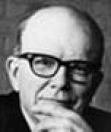CONTRIBUTOR TO THE TYLER OBJECTIVE MODEL

Ralph W. Tyler was born in Chicago, IL in 1902. Tyler received his bachelor’s degree in 1921 from Doane College in Crete, Nebraska. Immediately following his college graduation, Tyler began a teaching position in a high school in Pierre, South Dakota. He then proceeded to earn his master’s degree from the University of Nebraska in 1923 and his Ph.D. from the University of Chicago in 1927. In 1927, Tyler joined the faculty at Ohio State University. During his tenure there, Tyler helped Ohio State University faculty to improve teaching skills and student retention at the university. During his work at Ohio State University, he coined the term “evaluation” to encompass his idea of aligning measurement and testing with educational objectives. His concept of evaluation consisted of gathering comprehensive evidence of learning rather than from written testing. From 1933-1941, Tyler revisited his past experiences in teaching high school students, by being involved with the “Eight-Year Study” that addressed overcoming inflexibility and restriction in high school curriculum. The study involved 30 high schools and over 300 colleges and universities (Retrieved from http://en.wikipedia.org/wiki/Ralph_W._Tyler). Tyler is best known for his work, The Basic Principles of Curriculum and Instruction, which was based upon findings gathered from the Eight-Year Study (Ornstein and Hunkins 1998).
The Tyler Model, often referred to as the “Objective Model”, was developed by Ralph Tyler in 1942. The model consists of four questions that Tyler identifies must be asked for effective classroom instruction:
1. What educational purposes should the school seek to attain?
2. How can learning experiences be selected which are likely to be useful in attaining these objectives?
3. How can learning experiences be organized for effective instruction?
4. How can the effectiveness of learning experiences be evaluated?
Through the development of these four principles, Tyler introduced educational ideas leading to new considerations regarding the measurement of outcomes. This measurement of outcomes occurs by developing a list of program or curriculum objectives that indicates both the kind of behavior to be developed in the student and the area of content or life in which the behavior is to be applied (Keating 2006).
